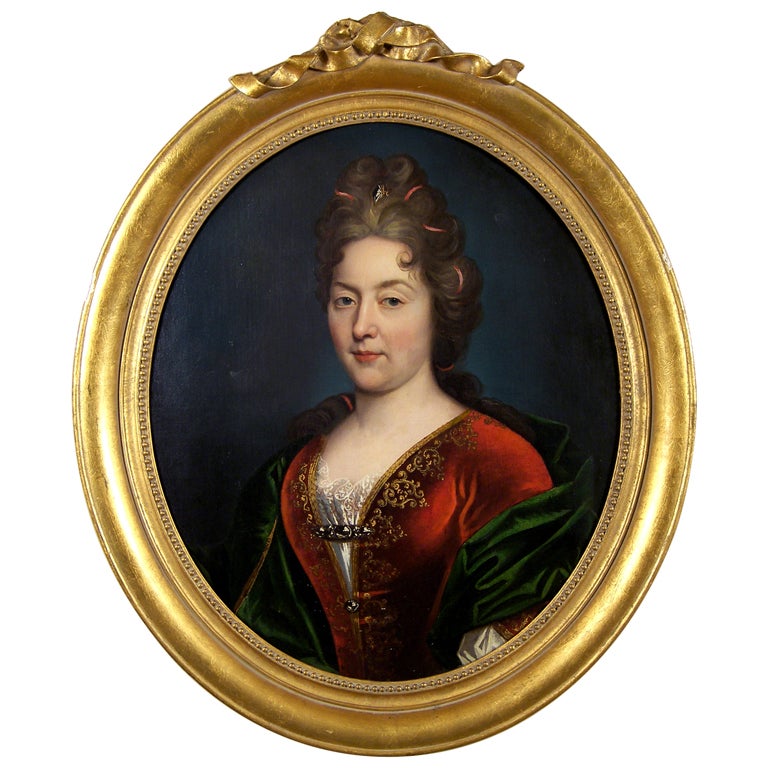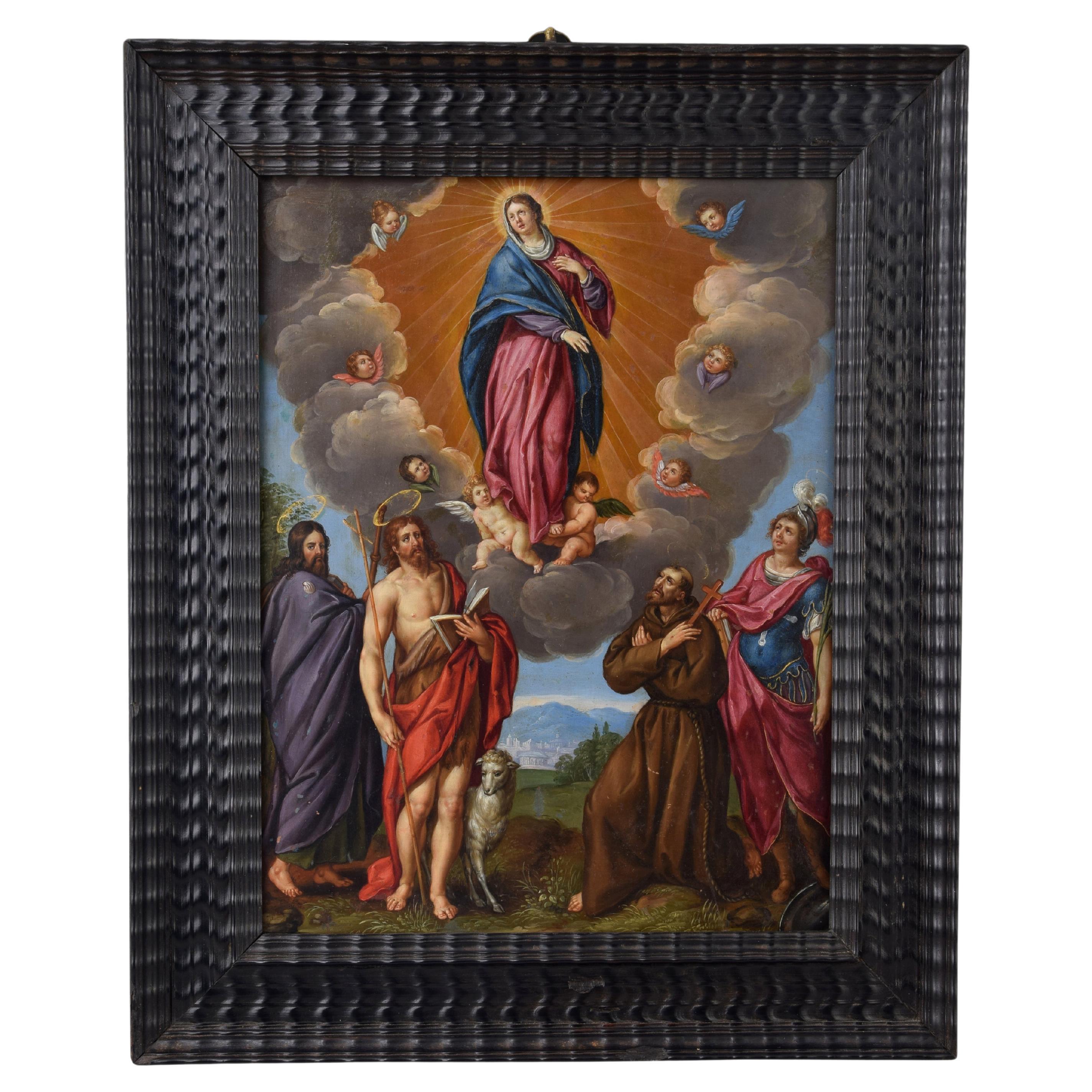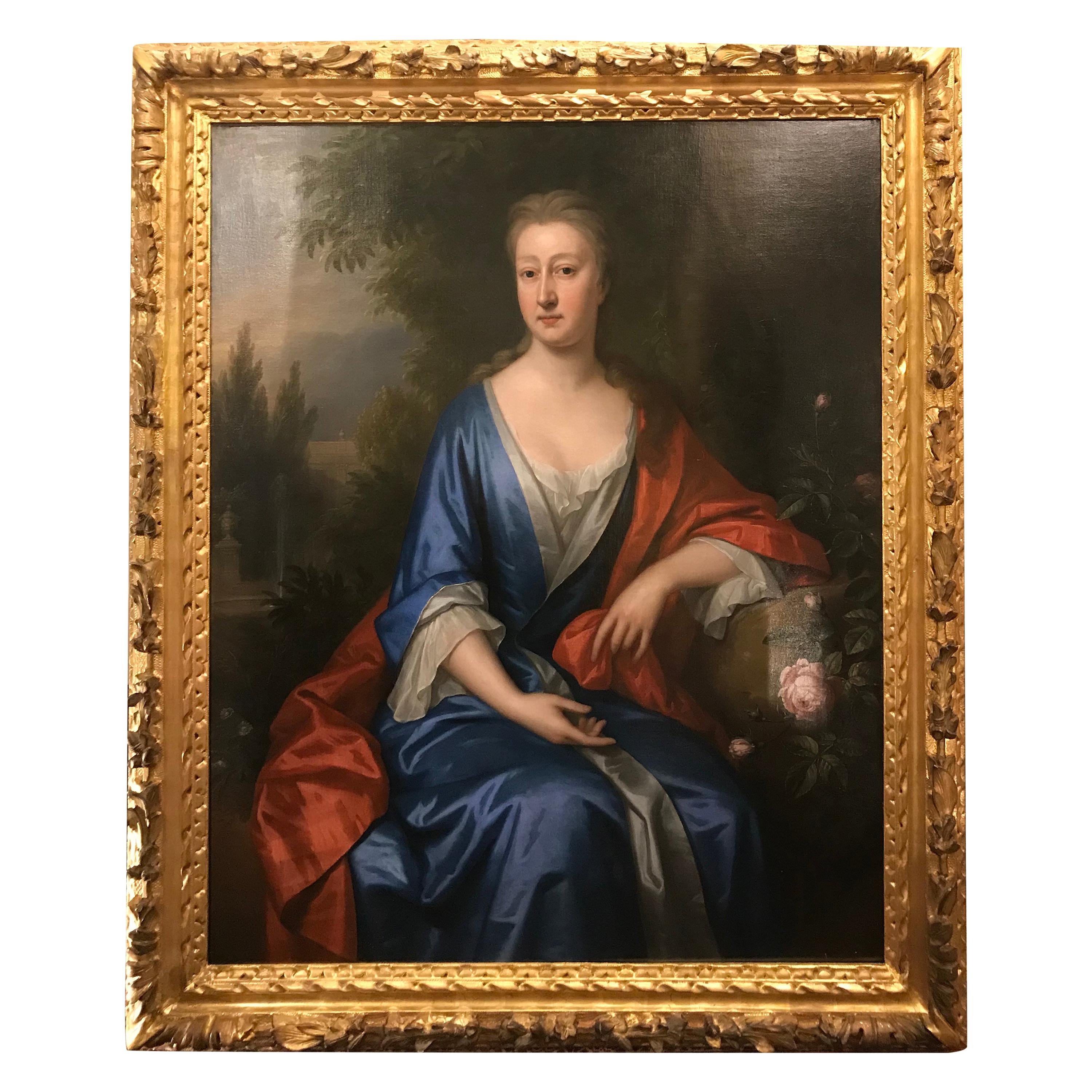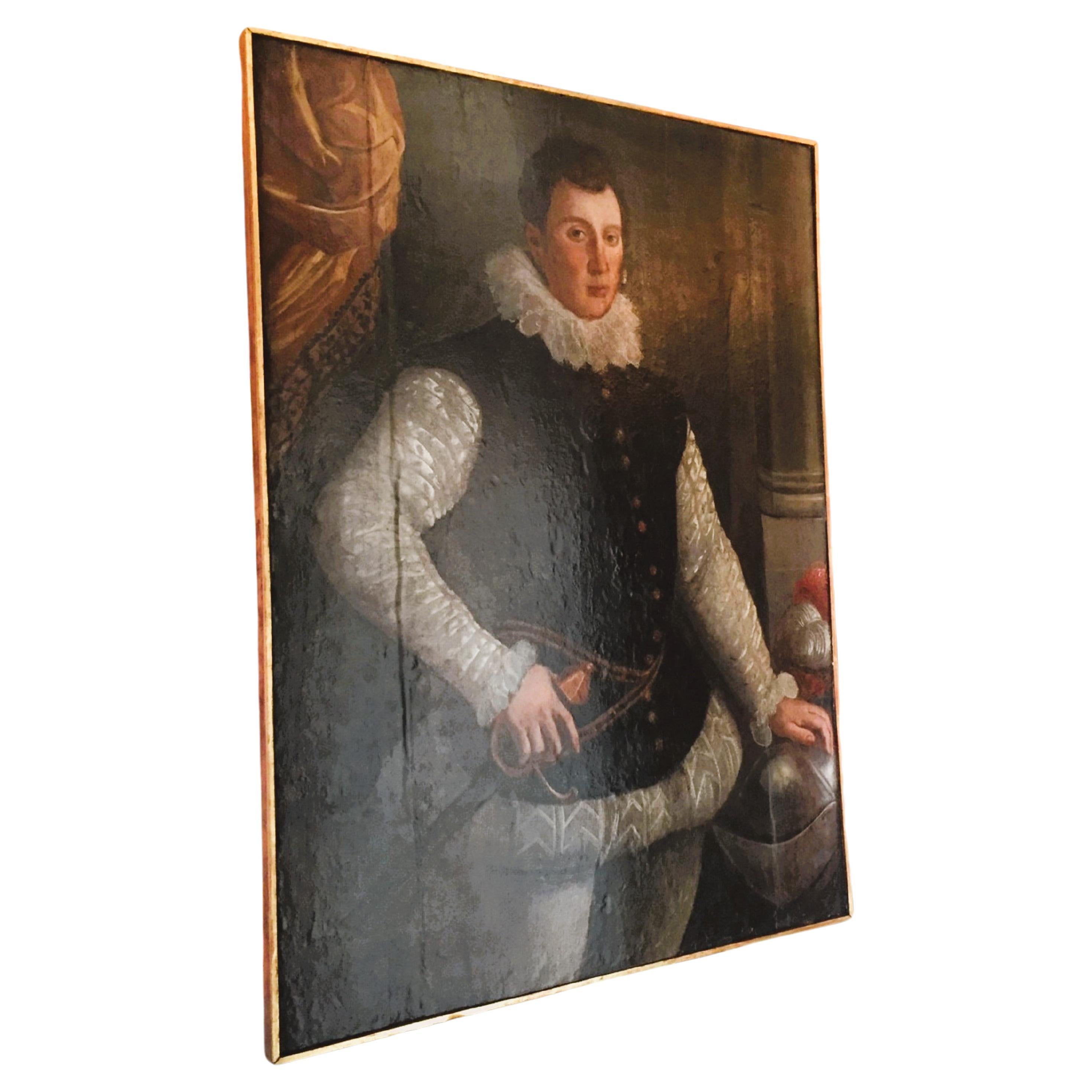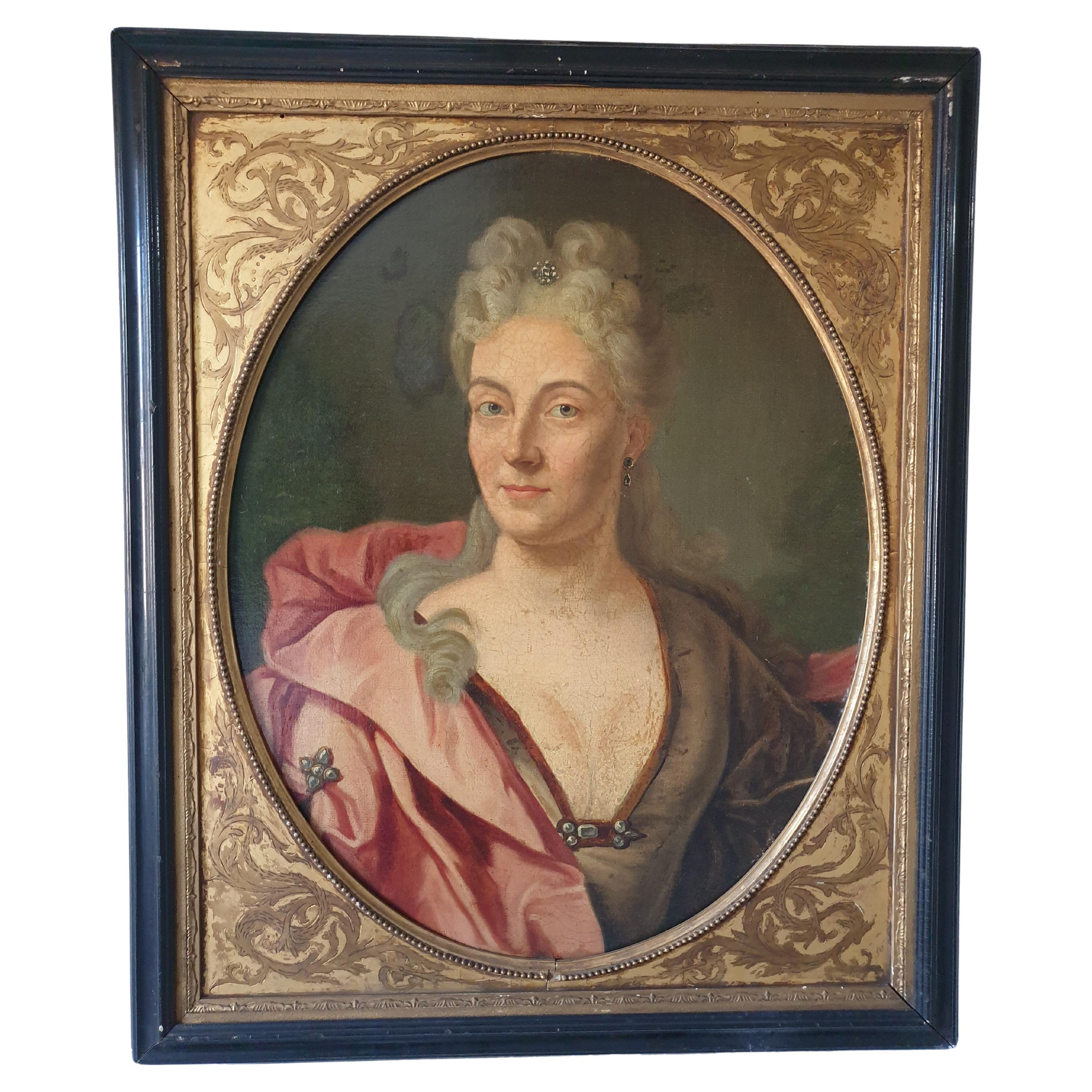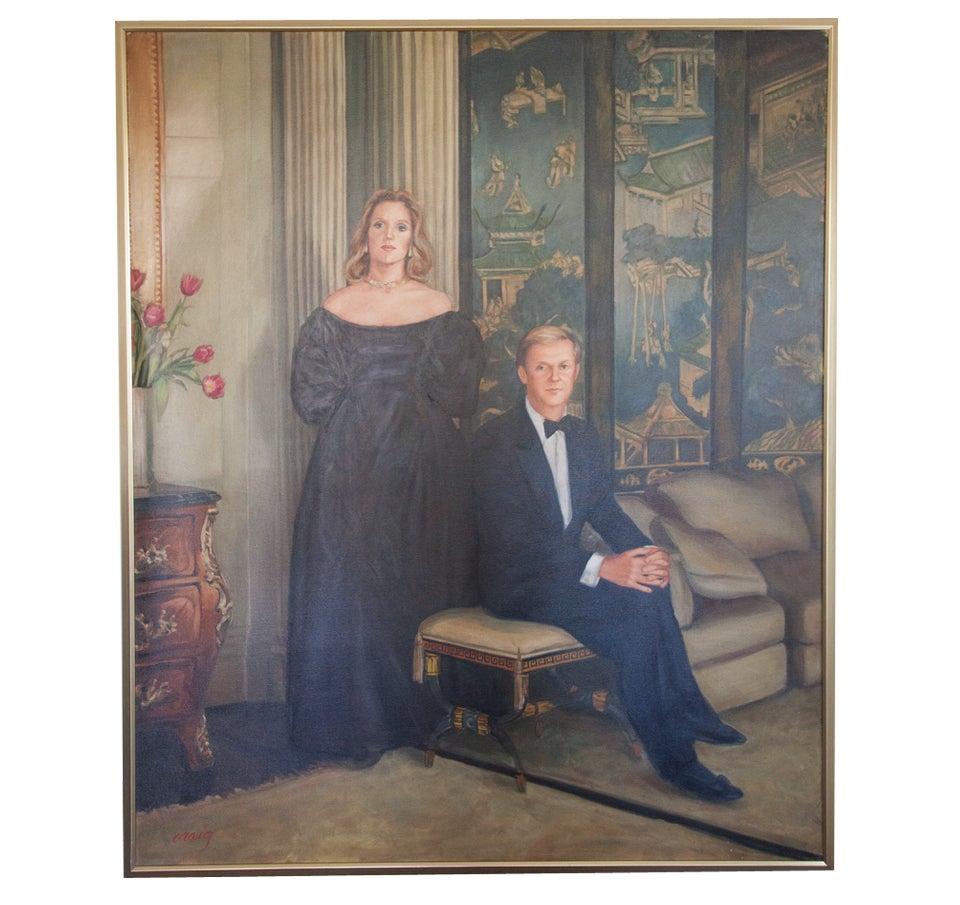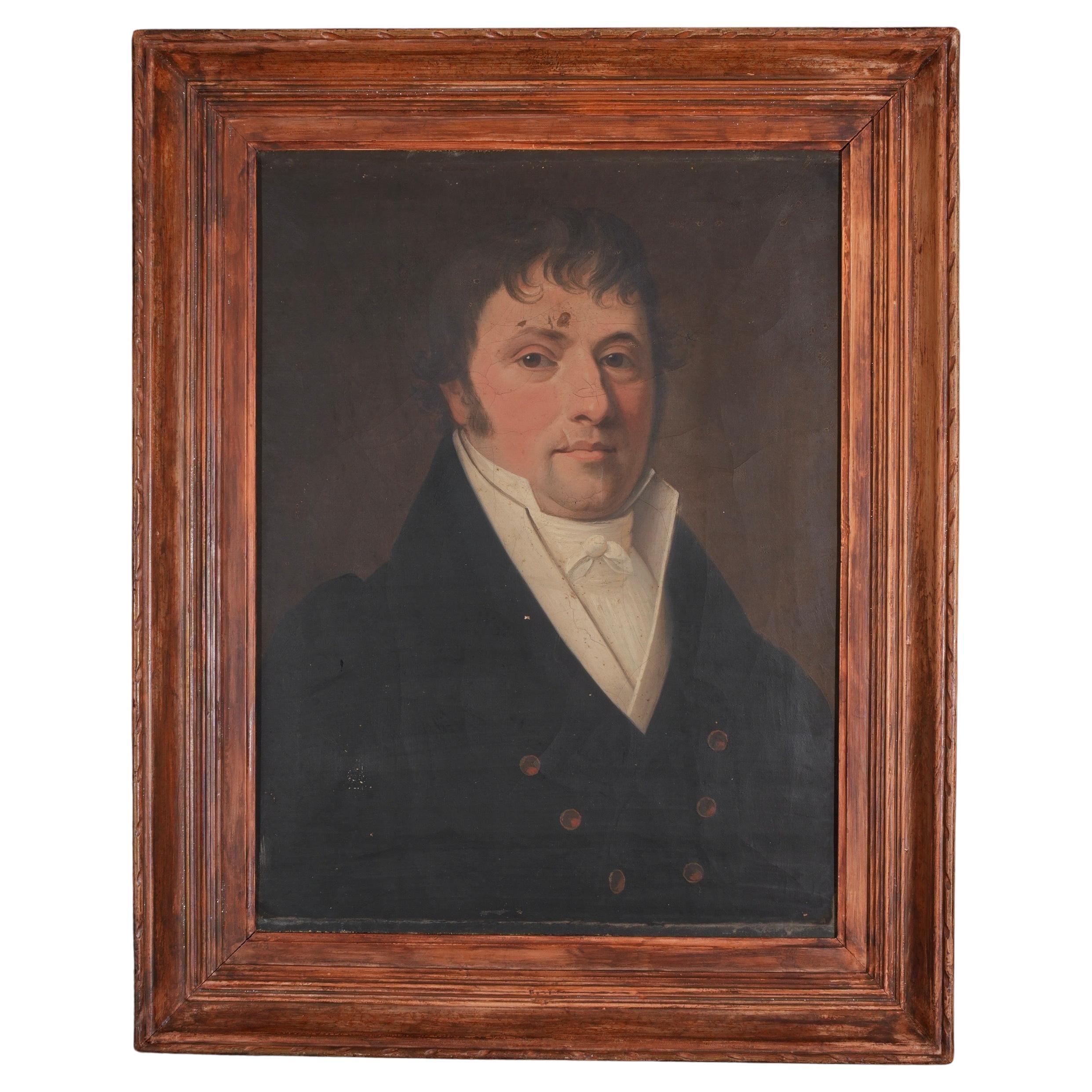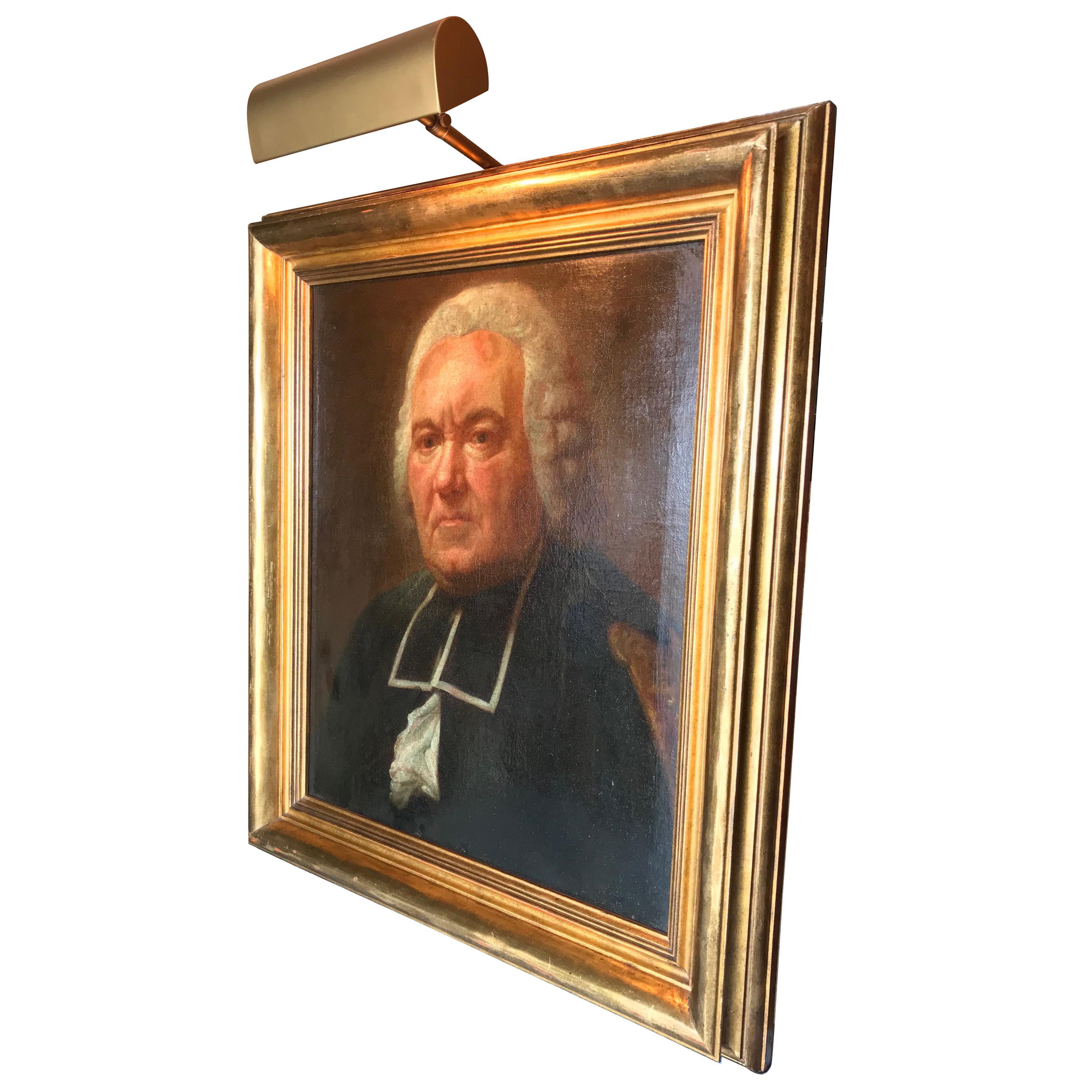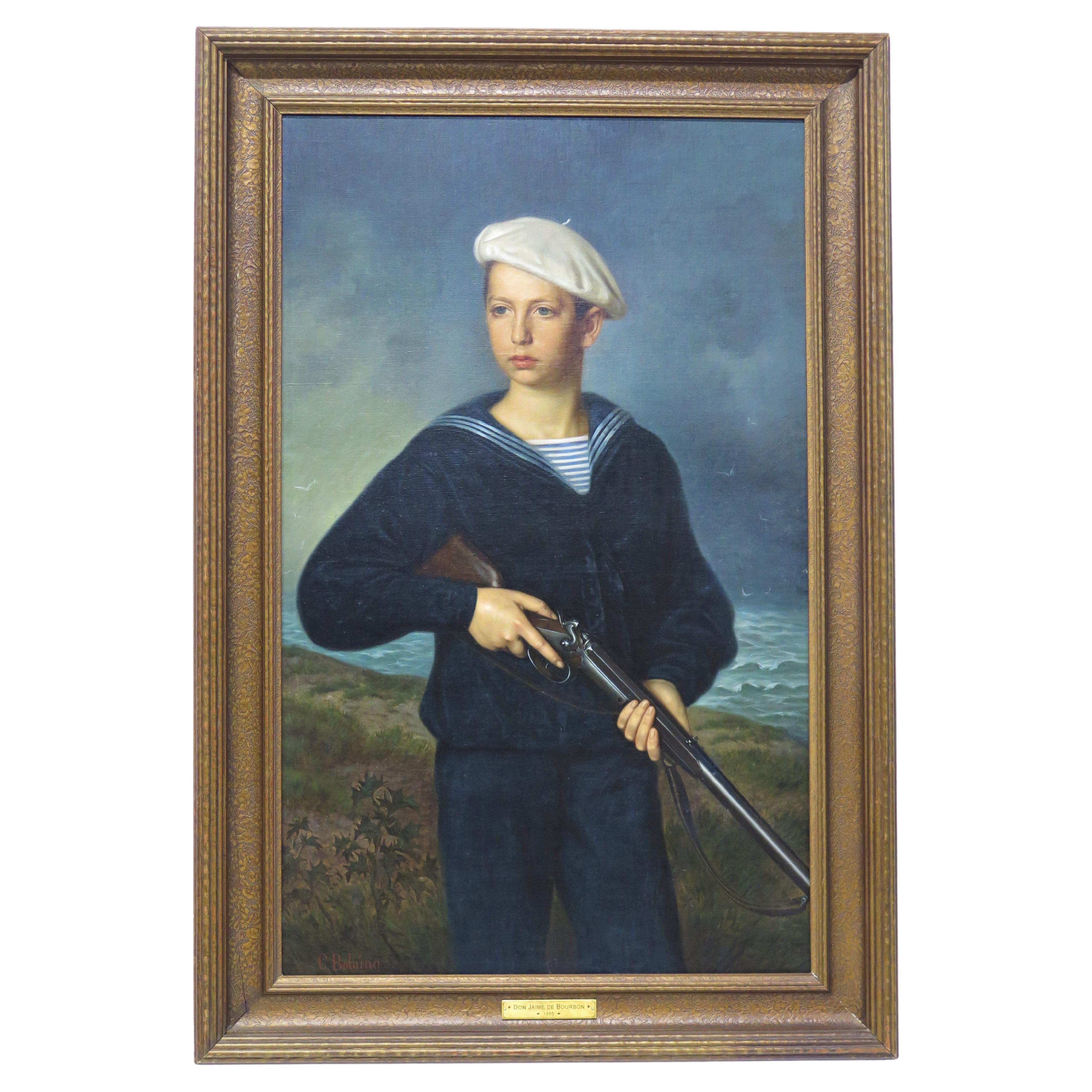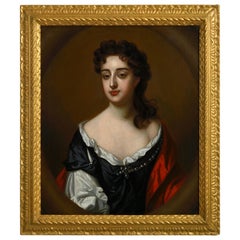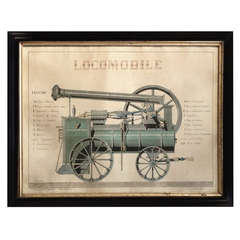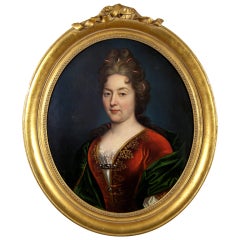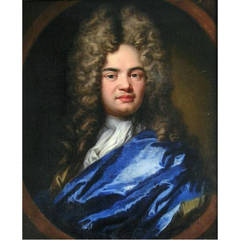
Circle of Nicolas de Largillierre Portrait
View Similar Items
Want more images or videos?
Request additional images or videos from the seller
1 of 2
Circle of Nicolas de Largillierre Portrait
About the Item
- Dimensions:Height: 18 in (45.72 cm)Width: 15 in (38.1 cm)Depth: 0.01 in (0.26 mm)
- Place of Origin:
- Period:
- Date of Manufacture:circa 1705
- Condition:
- Seller Location:London, GB
- Reference Number:Seller: 01341stDibs: LU103241134532
About the Seller
4.7
Vetted Seller
These experienced sellers undergo a comprehensive evaluation by our team of in-house experts.
Established in 2005
1stDibs seller since 2014
152 sales on 1stDibs
More From This SellerView All
- Jan van der Vaart Portrait of Dorothy, Lady BrownlowBy Jan van der VaartLocated in London, GBJan van der Vaart (1647-1727) Portrait of Dorothy, Lady Brownlow (1664-1700) Oil on canvas; held in a period carved wood frame circa 1687 Considered a beauty of the age, Dorothy, Lady Brownlow was painted on a number of occasions by some of the most talented and respected artists of the day; Kneller, Riley, Closterman, Dahl and Wissing, all rendered her features in oil for posterity. The portrait presented here is by Jan van der Vaart who from 1685-1687 was employed by Willem Wissing as a drapery and landscape painter. After Wissing’s death in 1687 he practiced as an independent portraitist much in the style of his master with some influence also of Kneller. This work is in fact the head and shoulders taken from Wissing’s three-quarter length of Lady Brownlow which hangs at Belton House, Lincolnshire and produced as a mezzotint in 1687. Van der Vaart has made some intriguing alterations particularly as the sitter now looks directly at us, appearing rather more provocative and self assured of her beauty. The confident rendering of the dress and pearls and the thickly drawn copious hair are hallmarks of Van der Vaart’s work. It is likely he completed this portrait – shortly after Wissing’s version – as a smaller variant intended for another family member as was often the practice. Dorothy Mason married Sir William Brownlow 4th Bt. in July 1688; she was the daughter and heir of Sir Richard Mason a politician and courtier to Charles II who owned estates at Bishop’s Castle, Salop and Sutton Surrey. She came from, and married into extreme wealth; her dowry upon marriage was £10,000 and on her death her husband inherited the estates that were once her father’s. In June 1697 William Brownlow succeeded his brother to the baronetcy and to most of his landed estates including Belton House. In 1698 he abandoned his Peterborough seat to contest Bishop’s Castle on behalf of his wife and in the interest of his mother-in-law, Lady Anna Mason...Category
Antique Late 17th Century English Paintings
MaterialsCanvas, Giltwood
- Late 19th Century Botanical Watercolor of a Red LilyLocated in London, GBA late 19th century botanical study depicting a red lily. Watercolor on paper held within a reeded giltwood frame.Category
Antique 1890s English Paintings
- 19th Century Technical Watercolor of a Green Steam Locomotive by Lois DuboisLocated in London, GBA 15/100 scale beautiful watercolor of a steam locomotive listing the technical names for the component parts and inscribed 'Pensionnat St Gabriel - Chatell...Category
Antique 19th Century French Victorian Decorative Art
MaterialsPaper
- Late 19th Century Botanical WatercolorLocated in London, GBA late 19th century watercolor and pencil study of a golden clematis, Clematis Tangutica. Watercolor and pencil on paper set within a reeded giltwood frame.Category
Antique 1890s English Paintings
- Late 19th Century Botanical WatercolorLocated in London, GBA late 19th century botanical watercolor depicting a spring blossom.Category
Antique 1890s English Paintings
- Late 19th Century Botanical WatercolorLocated in London, GBA late 19th century botanical watercolor, depicting an exotic cactus blossom. Set upon a paper mount within a reeded giltwood frame.Category
Antique 1890s English Paintings
You May Also Like
- "Portrait of a Lady" Attributed to Nicolas de LargilliereBy Nicolas de LargillièreLocated in Hillsborough, CAAttributed to Nicolas de Largilliere French, 1656 – 1746 “Portratit of a Lady” Oil on canvas Stamped 'Largilliere' verso 27 by 22 ½ in. w/frame 34 ½ by 28 ½ in. Nicola...Category
Antique 18th Century French Paintings
- Portrait of D. Maria Bárbara De Bragança, Circle of Louis-Michel Van LooBy H. van LoonLocated in Lisboa, PTPORTRAIT OF D. MARIA BÁRBARA DE BRAGANÇA (1711-1758), QUEEN OF SPAIN Circle of Louis-Michel van Loo (1707-1771) Oil on canvas Her Royal Highness, the Infanta Maria Barbara of Braganza (1711-1758) was the first-born child of King John V of Portugal (1689-1750) and his queen consort Maria Anna of Austria (1683-1754). Born in December 1711, she had the Convent Palace of Mafra built in her honour following a vow made by her royal father. Her status as Princess of Brazil, inherent to 18th century Portuguese presumptive heirs, would however be superseded once the queen gave birth to two male princes, D. Pedro (1712-1714) and D. José (1714-1777), preventing her from ascending to the throne. Daughter of one of the most illustrious monarchs of his time, Maria Barbara was carefully educated to become a fond admirer of the arts, and of music in particular, having had the Italian composer Domenico Scarlatti (1685-1757) as her music teacher. On the 10th January 1723 the young princess was betrothed to the Infante Ferdinand of Spain (1713-1759), eldest son of King Philip V (1683-1746). Six years later, on the 19th January, she entered her new country in a carefully choreographed ceremony that became known to history as the “Exchange of the Princesses”. This unique event took place on a specially built Bridge-Palace, a wooden, luxuriously decorated structure that included various modules and rooms, on both banks of the river Caia, the natural border between the town of Elvas in Portugal and of Badajoz in Spain. Simultaneously, on the same day that the Portuguese Infanta crossed the border to marry the Spanish Crown Prince, her new sister in law, the Infanta Mariana Victoria of Bourbon (1718-1781), her husband’s sister, crossed the same bridge in the opposite direction to marry Prince D. José, the Portuguese heir to the throne. Once married, Maria Barbara would spend 17 years as Princess of Asturias, only becoming Queen of Spain at her husband’s accession following the death of Philip V in 1746. She is portrayed in the 1743 painting by Louis-Michel van Loo (1707-1771) now in the Prado Museum, in which Philip V had himself represented with all his close family. The new Queen would take an important role at court eventually becoming the liaison between her husband and the King of Portugal, particularly throughout the negotiations for the Treaty of Madrid (1746-1750). Maintaining her interest in music, she patronized the Italian castrato singer Farinelli (1705-1782) while remaining close to her old master Scarlatti, having herself composed some sonatas for a large orchestra. She would also commission and fund the building of the Royal Salesians Monastery complex in central Madrid, where both her and Ferdinand VI are buried. The portrait we are presenting for sale shows the Queen in half-length, turning left at three quarters. She is wearing a blue low-cut dress embroidered with flowers and foliage, over a lace cuffed white blouse, and an ermine cloak pined on the left-hand side by a diamond broach. The powdered hair style is held sideways by a seven diamond and black plume headdress and topped by a small gold and pearl crown. The right arm rests on a cushion while the left hand, at chest height, holds a miniature male portrait. The Infanta’s features are analogous to the 1725 portrait by the painter Domenico Duprà (1689-1770), also in the Prado Museum collection. Further similarities can be found in another portrait by Louis-Michel van Loo, in which a seven diamond and black plume headdress is also present. In this work, the cushion supporting Maria Barbara’s right arm has also some obvious similarities to our painting. The same diamond headdress reappears in Van Loo’s above-mentioned portrait of Philip V’s family dated from 1743. It is nevertheless in Lisbon’s Ajuda National Palace that it is possible to find an almost identical depiction of the Infanta holding a miniature portrait of her husband. In it, the future Ferdinand VI is portrayed facing right at three quarters and wearing a curly wig, suit of armour, the golden fleece insignia and a blue band, in a composition that closely resembles an 18th century Spanish school painting that appeared in the art market in January 2016. Another detail common to various portraits of the Portuguese Infanta and Queen of Spain is the small gold and pearl crown on her head. In another Van Loo painting, also from the Prado Museum, in which Maria Barbara is portrayed as Queen, this crown is represented together with a headdress similar to the one previously described. Another two paintings by the same artist, at the Royal Academy of Saint Ferdinand, include the same ornament. We must also refer the paintings by the artist Jean Ranc (1674-1735). In one, dating from 1729 (Prado Museum), the Infanta is depicted outdoors holding a flower bouquet and wearing a yellow silk dress with red cloak, and a set of diamond and ruby jewellery that includes a headdress similar to the one present in our portrait. Another work by the same artist, belonging to the Complutence University of Madrid, depicts the Infanta sumptuously dressed in identical colours to our painting and wearing an elaborate headdress and diadem. These portraits, beyond their iconographical importance as contemporary records of the Infanta and Queen Maria Barbara, are also illustrative of 18th century fashion for jewelled head dressing. Often, flowers were combined with joyful adornments, composing almost theatrical displays that would reinforce the ostentatious nature of the image. The ornamental flowers and the chromatic character of the jewels would complement the luxury of the colourful dresses in blue, crimson, green or other silk shades, in compositions whose sole purpose was to highlight a royal sitter’s wealth and power, becoming an essential statement accessory within the strict court protocols and codes of conduct. Circle of Louis-Michel van Loo (1707-1771) Slowly but steadily, the resolute, tranquil and dignified attitude of Renaissance and Baroque portraiture becomes artificial and presumptuous. Mid 18th century society favours elusive expression and psychological deepness, albeit limited to the face, that, with emphasis on detail, on the rich colour palette and on changing costumes and landscapes, associated to the courtliness of gestures, creates a strongly artificial environment while maintaining a highly poetic intrinsic character. Louis-Michel van Loo followed a dynasty of famous Dutch origin artists that had settled in France. Initially taught by his father, Jean-Baptiste von Loo (1684-1745), the younger van Loo studied in Turin and Rome and frequented the Paris Academy. In Rome he worked with his uncle Charles-André van Loo (1705-1765) and become a painter for the Turin Court. In 1737 he arrived in Spain being summoned by Philip V to succeed Jean Ranc as painter of the king’s chamber. In Madrid, his work covers the numerous Court commissions and the Royal Saint Ferdinand Fine Arts Academy, of which he was a founding member and director for the Painting department in 1752. Is production at court consisted essentially of numerous portrait paintings, often Royal gifts...Category
Antique 18th Century Spanish Baroque Paintings
MaterialsCanvas
- Assumption of the Virgin Mary, Circle of Van De Kasteele, FransBy Francesco da CastelloLocated in Madrid, ESCircle of VAN DE KASTEELE, Frans (Brussels, c. 1541 – Italy, 1621). "Virgin with angels and saints". Oil on copper. Curly frame in ebony. Devotiona...Category
Antique Early 17th Century Italian Baroque Paintings
MaterialsCopper
- Jan van de Vaart Portrait of a LadyLocated in Lincoln, GBJan van de Vaart was a Dutch painter and draughtsman of portraits, landscapes, still life's, and trompe-lioeil paintings, and a mezzotint artist who was active in England for most of...Category
Antique 17th Century English Paintings
MaterialsPaint
$25,313 Sale Price25% Off - Circle of ALESSANDRO ALLORI Portrait Of a Young Man Wearing A Ruff Wall ArtBy Alessandro di Cristofano AlloriLocated in West Hollywood, CACircle of ALESSANDRO ALLORI Portrait Of a Young Man Wearing A Ruff Wall Art , possibly portrait of a young Nobleman Oil on Wood Panel , unsigned . signs of restoration , normal wood panel cracks due to centuries and elements as seen in the pictures but overall great piece of Art. Alessandro di Cristofano di Lorenzo del Bronzino Allori (Florence, 31 May 1535 – 22 September 1607) was an Italian painter of the late Mannerist Florentine school. In 1540, after the death of his father, Allori was brought up and trained in art by a close friend, often referred to as his 'uncle', the mannerist painter Agnolo Bronzino, whose name he sometimes assumed in his pictures. This incredible Artwork painting would be beautiful addition to collectors or to decorate a law office a library , Hallway , Living room a man's room or as a great elegant gift idea for an office space and house warming . Antique dealer West Hollywood Melrose Ave La Cienega Blvd . On top of a dresser a semainier a secretaire or in the background of your desk , this outstanding painting with the hand carved wood gilt frame will be the touch of old world adding the charm history and elegance to your decore . This beautiful portrait of a gentleman is very versatile and can go with any design, rustic farm , elegant space , formal setting , modern or old world European charm . overall good shape, recanvassing so many of the wonderful Art In the prime of his career, Allori headed one of the "two most important workshops in Florence in the second half of the 16th century" (the other being headed by Santi di Tito...Category
Antique 17th Century European Paintings
MaterialsWood, Paint
- 18th Century Oil On Canvas In Gilt Frame School Of Nicolas De LargilierreBy (circle of) Nicolas de LargillierreLocated in London, GBSchool of Largillierre, Portrait of a Lady of the Verheyden Family. The original frame is black lacquered wood with gilt insert. Nicolas de Largilliere (1656-1746), was born in Paris...Category
Antique Early 18th Century French Rococo Paintings
MaterialsCanvas
